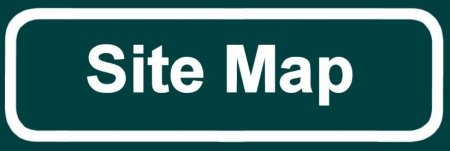*********************************************************************************************************************************************
APRIL 2024 UPDATE
*********************************************************************************************************************************************

JONNY DUFFETT

My latest 3D designs have been drawn up and printed, starting off with the Trout ballast
hopper which was developed by Leeds Forge in the 1920s from designs dating from the 1910s,
for the South Eastern and Chatham Railway, and for export. The design was given LNER Dia
54 and LMS Dia 1800, was unfitted and had a capacity of 25 tons. Later lots of
wagons were built by Met Cam and BRCW. After nationalisation British Railways built more.
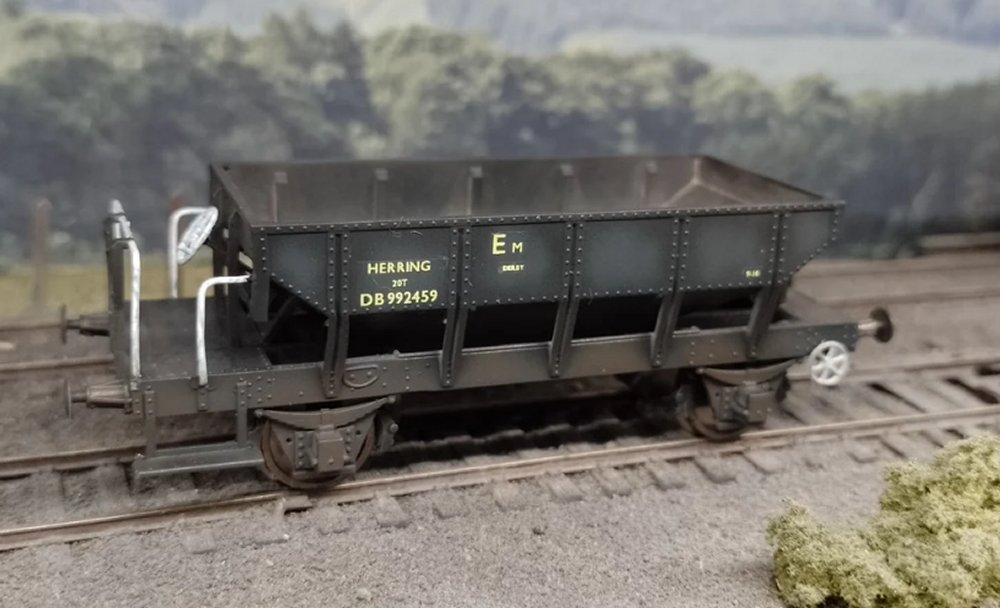
BR built Herring ballast hopper. They were developments of the earlier Trout hopper
but have a slightly longer wheelbase and body with less capacity, and were vacuum fitted.
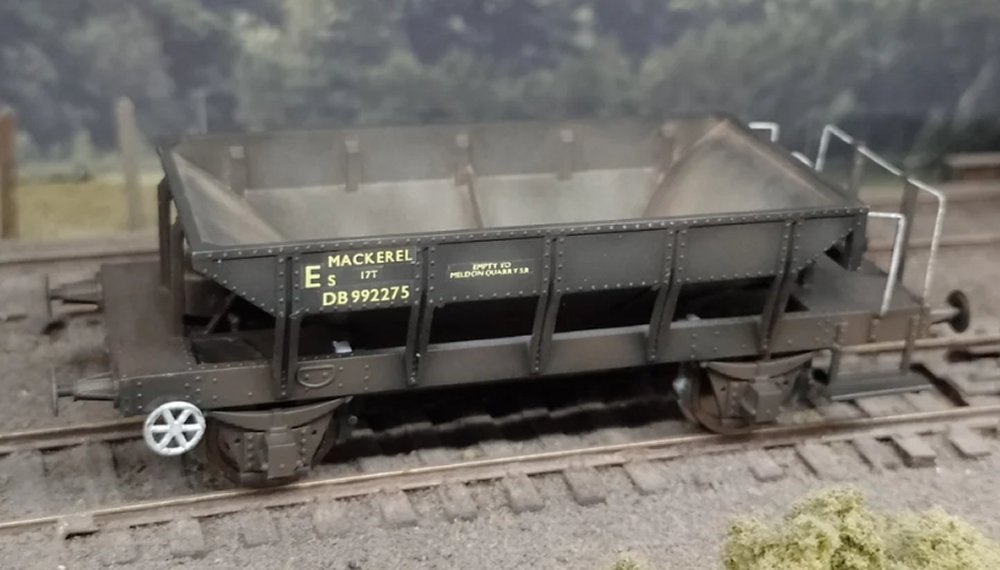
A BR built Mackerel 17t ballast hopper which was also a development of the earlier Trout
with a slightly longer wheelbase & body, vacuum fitted and lower body than the Herring.

Other designs drawn up recently include these Southern Railway themed items to include a
concrete tool shed and two different designs of water columns.
My 3D designs are available free at
Thingiverse
for you to print yourself, or visit
the links page for printing service options.
*********************************************************************************************************************************************

KARL CROWTHER

The lever frame for Kendal is at last completed. The panel above the levers was built up
from 80 thou Plastikard, while below can be seen sockets for the various electrical
connections. At present itís working without the interlocking as that hasnít been built yet!

And here is the lever frame installed into the layout, complete with the block
instruments now re-sited to their final position on their shelf above the planned
height of the eventual backscene.

A small diversion has been the creation of this ex-Furness Railway style water column,
based loosely on one from Lakeside. The Ratio kit for a GWR column formed the basis,
with an added spherical bead from the bits box, plus a hose done using some
brass tube flattened in the vice.

Now to the quarry, looking across with the little Ruston on shed. The control panel
has been completed and itís all now fully wired
in and working. I wanted to have an obvious physical separation from the main running
lines, which has been achieved, but probably they could have been a litle closer as
space for scenic development at the rear is going to be a bit tight. Also, and partly
in consequence, the reception sidings arenít long enough for complete trains, which
will complicate shunting moves, but I guess will give the operators something to
think about! Iíve started to mock up some of the structures to gain a feel of how
to approach the landscaping. The little engine shed is based loosely on Coniston,
but with an influence of Middlepeak at Wirksworth in Derbyshire, while the
old lime kilns are from Sandside.

One thing I wanted to portray was the sense of the quarry extending much further into
the landscape beyond the modelled area. The plan at present is to have a road access
disappearing offstage (just left of the servos), which would enable the weighbridge
to be moved closer to the front of the layout. Youíll gather Iím making things
up as I go along!

And finally, another project that has been started last month. A friend of mine asked
me to build the Comet kit for the ex-LMS Ivatt 2-6-0. As I also need one for the
layout (46441) the two are being built in tandem. Both were the original kits with
the brass chassis, later provided with a more EM / P4 friendly nickel-silver version,
so a pair of these are on order. For now, Iíve started on the tenders, replacing the
chassis with one from the Lanarkshire Models range.
*********************************************************************************************************************************************

KIER HARDY

Bridge Street with its station buildings has always been the scenic break at the north
end of the layout, but developments in the last few years have seen a short extension
beyond the bridge which allows the tracks to curve around towards the storage yards.
The extended section has been built in silhouette form to prevent an abrupt end to the
scenery when looking through under the bridge.

From the other side of Bridge Street, the back of the station buildings have never
been properly detailed, as they were originally hard up against a back scene. This is
the first view you're greeted with when entering the railway room, so with around 30 inches
to the end of the platforms, the area is going to be developed into a fully detailed
scene. The first phase will feature a covered footbridge linking Crown Street to the
LT station, across the back of the BR station with access steps down to the platforms. The
retaining wall has been increased in height, and the necessary structures built to
support the areas above the tracks.

The footbridge is situated on a baseboard join, so has been made removable and slides
into place. Constructed from styrene sheet / section and brass angle for strength, the
various panels were drawn up in the style of Great Northern covered footbridges
with vertical planking to the lower panels.

The sections were drawn and 3D printed by Jonny Duffett to suit the dimensions of the
footbridge, with overlapping end posts to provide continuity to the structure, and
recesses for the glazing.

Some internal detail has been added in the way of advertisments, although they're not
going to be highly visible once the grime covered windows are fitted. A couple of
broken panes have been featured, in common with the general neglect that was apparent
in the early 1970s.

This is the state of play at the end of March with the footbridge part of this project
complete but awaiting weathering. A start has also been made on the cable brackets on
the retaining wall and the platforms require some realignment and new surfaces....
watch this space.

Now it's time for an interlude showing a few snaps taken from the lineside. Here's a
rare visitor on GN metals from the Shenston Road fleet - D0280 Brush prototype Falcon
displaying excursion headcode 1Z00, whilst an unidentified Brush 4 heads south with
an express service for Kings Cross.

English Electric type 4 number 337 waits in platform 2 with a freight heading for East
London - a Bachmann Class 40 from Greg's Shenston Road fleet.

A good day for Heljan Brush 4s with 1518 leading 1516 with a southbound service, passing
two-tone green 1100 heading in the opposite direction, whilst 1510 lurks in the background.

Five new wagons have entered the Hornsey Bdy fleet, namely 2 Herrings, 2 Mackerels,
and a Trout. These 3D printed wagons are from Iron Mink's catalogue on Thingiverse
(as mentioned above), the right hand image showing progress on the workbench with
handbrake wheels and door operating wheels ready to fit.

Also new to the Hornsey fleet is English Electric type 3 number D6702 (Accurascale)
which can be seen here hauling the new wagons, along with some of my existing Catfish
and Dogfish ballast hoppers.
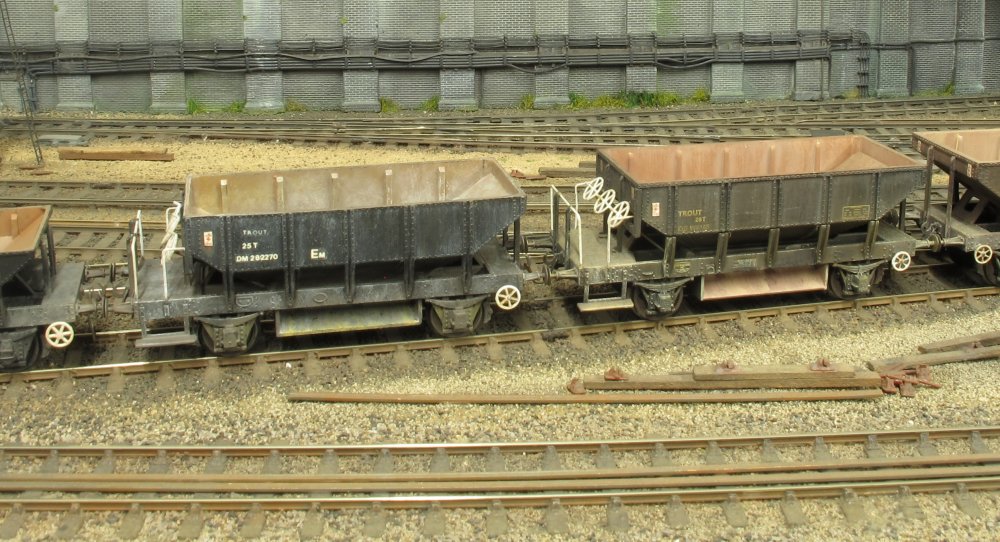
The ex-LMS 3D printed Trout (DM282270) is shown here next to a Hornby BR built Trout,
the differences being minimal and feature slightly different detail at the top of the
wagon sides. The Hornby 2-part construction is evident with a break in the side struts.
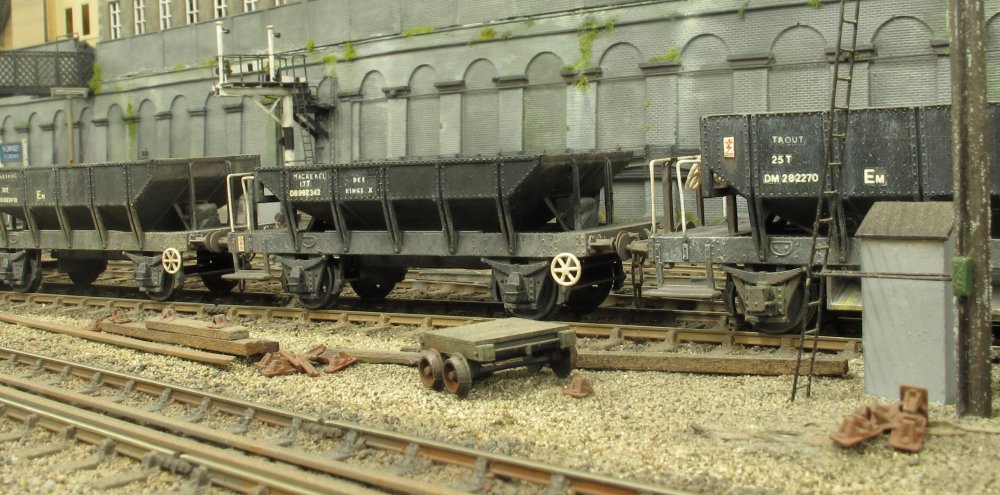
BR built 17t Mackerel DB992342.

BR built 20t Herring DB992418.

BR built 20t Herring DB992387 & 17t Mackerel DB992325.

An interesting mix of ballast hoppers head away from the camera.
*********************************************************************************************************************************************

STEVE CARTER

After the GWR Y8 fruit van build which used the Bachmann r-t-r offering, attention was
focused on creating the BR Diagram 1/231 equivalent. These were very similar to their
GWR predecessors but differed in having plywood doors and ends so a slightly different
approach was taken. Each side was prepared from the Bachmann model as before but was
then split into three to remove the planked doors, allowing for their replacement with
plain plasticard made up to a thickness of 1.7mm (this thickness means that the
projecting web of the door frame sits prototypically higher by approx. 0.3mm). The
plywood ends started out as part of a Ratio kit for the SR plywood van (Part No. 593
/ PC593) and means that all of the end ironwork details are already catered for (vents
excepted). Thankfully they are not equipped with moulded vents and so the only job
needed to adapt them to their new role is to lessen their height and reprofile them
to the arc of a GWR roof.

The doors have been detailed and end bonnet vents were created from a 40 thou piece
of plasticard which was first filed into a suitable knife edge profile as seen in the
inset. The end diagonal struts were mistakenly added by using incorrect 'L' section
but have now been exchanged for correct 'T' section pieces using 0.8mm Evergreen 'T'
section (Part No. 761).

The BR variants also differed from their GWR brethren by using BR style W irons rather
than RCH types and so this time the chassis was obtained from a Parkside Dundas PA16
BR / LMS 10' chassis kit (as found in the PC41 Vanwide kit). This features both LMS 'J'
hanger and BR type suspension and it is the latter which is of use as it features a
single hole on the W irons which matches those found on the prototype vehicles. Its
axleboxes are BR plate front style and have been replaced with 2 part oil axleboxes
as these seemed to feature more regularly on these vehicles. Another slight detail
change to the chassis are modified leaf spring stops which on the kit are rather
weedy when compared to the prototype.

Comparison of the two types - the BR built examples featured high level vacuum pipes
rather than the low slung type found on the GWR vans and have been created from brass
rod / wire. Buffers also differ (BR vans using 1' 6" long components rather than 1' 8 1/2"
as found on the Y8 vans) and are catered for by Lanarkshire Model Supplies (Part No.B003).
*********************************************************************************************************************************************

GREG BROOKES

Starting off this month with camera in hand, looking along Station Road with the
Mitchell & Bultler's brewery dominating the skyline, and highlighting the TV aerials
on the rooftops of the houses.

Looking in the opposite direction - the aerials are made from nylon brush bristles
glued together to provide a durable material that can withstand the odd knock or two.

Moving to the north end of the station, D1005 Western Venturer is seen hauling a
Wolverhampton bound express as it passes BR type 2 number 7551 at the head of a
mixed freight.

Brush 4 - 1518 back on home territory stabled with Class 40 number 337.

Passing the steelworks exchange sidings we see a pair of Speedfreight containers on
Conflat A wagons.

Showing the 2 different types of Bachmann containers mounted on modified Parkside
Conflat kits, highlighting the 3D printed locking mechanisms and alignment brackets.

Relatively new into the fleet is this 20t brake van based on the Hornby model, detailed
and weathered using Tamiya panel line accent colour washes.

A view of BSC Shenston looking towards the blast furnace, with the coking ovens to the right.

A helicopter view of the same area with the main line to Wolverhampton visible below.....
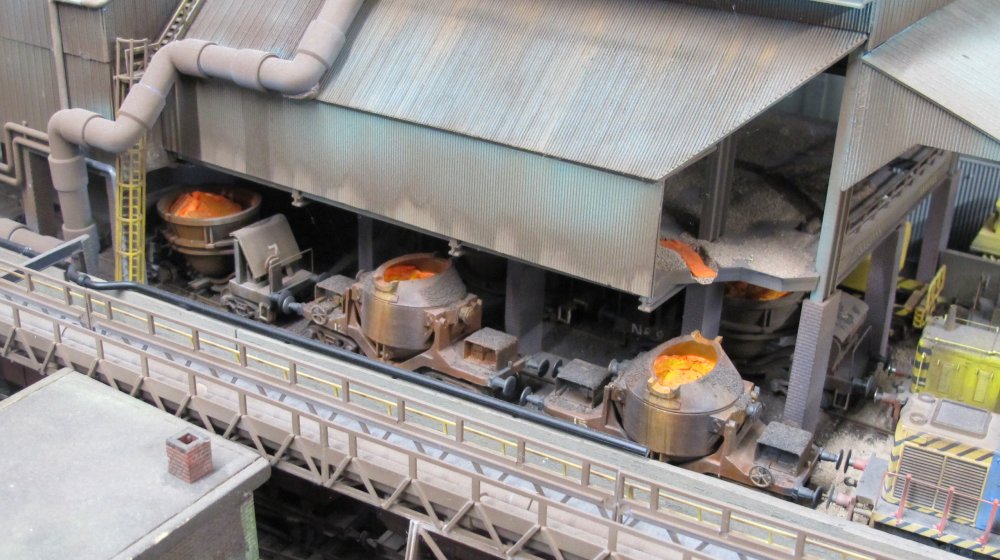
.... and a close up view of the molten steel being poured for processing in another part
of the plant.
*********************************************************************************************************************************************

WANTED - Bachmann FFA inner container flats, 38-626 (Freightliner) or 38-628 (Maritime).
Any condition considered, with or without containers, with or without boxes.
If you have any stashed away that you're willing to sell, please get in
touch by clicking on the 'Wanted' button below.
*********************************************************************************************************************************************




